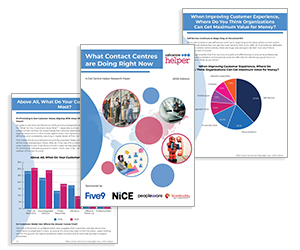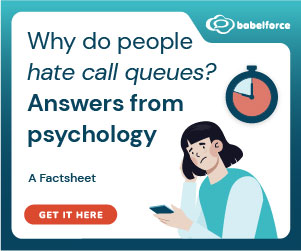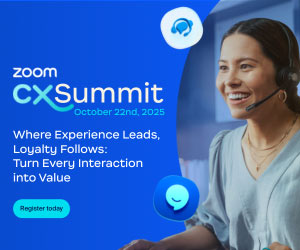This blog summarizes the key points from a recent article from David McGeough at Scorebuddy, where he walks through 12 customer satisfaction survey best practices.
Providing a great customer experience is essential for call centres, especially at the enterprise level, where handling high volumes of daily interactions adds complexity. Even if your product is top-tier, 64% of customers will walk away after poor service.
That’s why it’s critical to use well-designed customer satisfaction surveys. Unfortunately, many of these efforts miss the mark due to issues like low participation, vague feedback, irrelevant questioning, or delays in gathering responses.
What Exactly Is a Customer Satisfaction Survey?
A customer satisfaction survey is a structured way to collect direct feedback from customers about their service experience. In the context of a contact centre, this typically means gauging how customers felt after speaking to an agent:
- Was their issue resolved?
- Were they treated professionally?
- Was the interaction smooth and hassle-free?
These surveys often measure key metrics like CSAT (Customer Satisfaction Score), NPS (Net Promoter Score), and CES (Customer Effort Score).
They provide insight into how your service is perceived and help uncover both operational strengths and improvement areas. Surveys are commonly distributed right after a call via SMS, email, or IVR.
A typical CSAT survey might begin with a question like, “How satisfied were you with your recent interaction?” Follow-ups can touch on:
- Hold/wait times
- Agent demeanor and professionalism
- Whether the issue was resolved
The goal is to assess performance, identify pain points, and monitor service quality. This helps QA managers focus coaching efforts and support better overall customer care.
Why Satisfaction Surveys Are Crucial in Enterprise Environments
In larger organizations, where call volumes are high and customer journeys are often complex, even small inefficiencies can have big consequences.
This makes satisfaction surveys a vital tool-not just for measuring performance, but for proactively addressing service gaps before they become bigger problems.
For enterprise call centres, these surveys act as early warning systems. They highlight where improvements are needed, offer insight into customer loyalty, and help retain high-value customers across large, diverse user bases.
5 Types of Customer Feedback Surveys and When to Use Them
Not all customer surveys serve the same purpose. Different formats are designed to collect specific kinds of feedback at different touchpoints. Understanding each type helps ensure you’re collecting the right data to drive improvements.
1. CSAT (Customer Satisfaction Score)
CSAT measures how satisfied a customer is with a specific interaction. Usually presented as a 1-5 or 1-10 rating, CSAT is fast, straightforward, and best used right after a call.
2. NPS (Net Promoter Score)
NPS captures long-term customer loyalty. The question “How likely are you to recommend us to a friend?” is answered on a scale from 0 to 10, allowing you to group respondents as promoters, passives, or detractors.
3. CES (Customer Effort Score)
CES focuses on the ease of resolving an issue. Lower effort scores typically reflect a smoother experience. CES helps pinpoint friction points within your customer journey.
4. Product or Service Satisfaction
Product or service satisfaction targets feedback on the product itself, independent of the support interaction. These surveys can uncover bugs, usability concerns, or feature requests.
5. Agent Performance Evaluation
These surveys focus on how well the agent handled the interaction, asking about clarity, communication skills, and professionalism. They are essential for QA programs and coaching.
Tip: Understand the distinction between transactional surveys (focused on specific interactions) and relational surveys (focused on overall brand sentiment). Use both to form a well-rounded view of customer experience.
12 Proven Tips to Improve Customer Satisfaction Surveys
Here are best practices to follow if you want more actionable insights and higher CSAT:
1. Connect Survey Goals to Business Outcomes
Don’t send surveys just to check a box. Tie your survey’s purpose to specific call centre KPIs – such as first call resolution (FCR) or upsell success – to ensure your feedback data actually supports improvement efforts.
2. Send Feedback Requests Immediately After Calls
The time you send the survey will affect the response rates and accuracy of any responses. Real-time feedback correlates more closely to customer sentiment and allows for easier attribution to individual agents or calls.
It is a good idea to set up automated surveys that send within minutes of the call ending.
3. Mix Scored Questions With Open Comments
Combine quantitative scores (e.g., “Rate your satisfaction 1-5”) with open-ended follow-ups like “What could we do better?” This provides both numerical trends and deeper customer insights.
For example, a customer satisfaction score may ask for a rating between 1 and 5 with a box underneath that says “Please tell us what went well or anything that we could’ve done better.”
4. Keep It Short and Sweet
Lengthy surveys ultimately lead to lower participation. It is important to aim for just a few questions that can be answered in under a minute.
You can then end it with an open-ended question that respects your customers’ time to get more meaningful responses.
5. Adjust Surveys Based on the Channel
Different survey formats work better depending on the channel. For example:
- SMS – Short, numeric scale (e.g., “Reply with 1-5”)
- Email – Slightly longer, include one open-ended question
- IVR – Keypad responses with minimal branching
By optimizing for each channel, you are likely to improve the response rate, user experience and feedback accuracy. Let customers choose their preferred method when possible.
6. Segment Data for Better Analysis
Raw survey results don’t tell the full story. The results that you get from support issues compared to billing queries can be vastly different. Segment your feedback by:
- Call type (billing vs. support)
- Customer demographics
- Journey stage (pre-sale vs. post-purchase)
This contextualizes the feedback and makes insights more actionable.
7. Use Text Analytics & AI for Qualitative Responses
Using open-ended questions in surveys can show some of the best insights, but manually reviewing thousands of responses isn’t realistic. AI tools can analyze open-text feedback at scale.
With sentiment analysis and natural language processing (NLP), you can automatically detect recurring issues and emotional tone in comments-without needing to read every one manually.
For example – If multiple customers describe their experience as “Awful” or “Frustrating”, AI-powered sentiment analysis can highlight the negative feedback before it costs you any business. You can then take the appropriate action.
8. Act on Feedback to Close the Loop
Collecting any feedback is only useful if you are acting on it. You can use the insights to:
- Recognize top-performing agents
- Coach for improvement
- Reconnect with dissatisfied customers
By using the feedback to improve the contact centre, you can build trust and accountability, improve customer retention and brand loyalty, enhance customer lifetime value, and ensure positive experience in the long run.
9. Be Strategic About Sampling
You don’t need to survey every customer after the call. However, sending too few limits gathering useful data. Instead:
- State sampling criteria based on call type, the difficulty of the interaction etc.
- Avoid bias (e.g., only surveying repeat customers or VIPs)
- Randomly sample calls to get a well-rounded look at different call types.
10. Protect Customer Privacy
It is important to make sure your surveys comply with regulations like GDPR and CCPA. Clearly state how data will be used and stored, and avoid asking for sensitive information unless absolutely necessary.
By doing this, not only are you being compliant with the law, but it also builds trust with customers. Being carless with feedback can lead to large fines and reputational damage.
11. Benchmark Results to See the Bigger Picture
You need to know how your results from they surveys compare over time. Evaluate your CSAT and NPS scores against:
- Your own historical data
- Industry averages or peer organizations
By doing this, you can use the data to set realistic goals, identify outliers, and track improvement over time.
12. Translate Data Into Meaningful Change
Surveys should guide action – not just reporting. Use feedback to:
- Refine scripts or processes
- Develop new agent training modules
- Identify automation opportunities
Make someone responsible for turning feedback into next steps to ensure nothing gets missed.
Common Mistakes to Avoid in Satisfaction Surveys
Even with good intentions, it’s easy to fall into traps that reduce the effectiveness of your feedback program. Watch out for:
- Biased or leading questions – Make sure your wording doesn’t hint at a “correct” answer.
- Overly long or irrelevant surveys – Keep things concise and focused only on the recent interaction.
- Poor timing – Delayed surveys lead to vague or inaccurate feedback.
- Repetitive surveying – Don’t ask the same customers to take surveys too often – it causes fatigue and opt-outs.
- Failure to act – If customers don’t see improvements after sharing feedback, they’re less likely to engage again.
- Over-incentivizing – Offering big rewards can skew responses. Instead, focus on simplicity and ease.
- Unclear question formats – Stick to straightforward scales and plain language.
- Lack of personalization – Tailor surveys to reference the interaction or channel to boost relevance and engagement.
- No follow-up strategy – Always have a plan for sharing results internally and showing customers that their voices lead to change.
This blog post has been re-published by kind permission of Scorebuddy – View the Original Article
For more information about Scorebuddy - visit the Scorebuddy Website
Call Centre Helper is not responsible for the content of these guest blog posts. The opinions expressed in this article are those of the author, and do not necessarily reflect those of Call Centre Helper.
Author: Scorebuddy
Reviewed by: Rachael Trickey
Published On: 10th Jul 2025 - Last modified: 16th Jul 2025
Read more about - Guest Blogs, Scorebuddy






 Scorebuddy is quality assurance solution for scoring customer service calls, emails and web chat. It is a dedicated, stand-alone staff scoring system based in the cloud, requiring no integration.
Scorebuddy is quality assurance solution for scoring customer service calls, emails and web chat. It is a dedicated, stand-alone staff scoring system based in the cloud, requiring no integration. 































